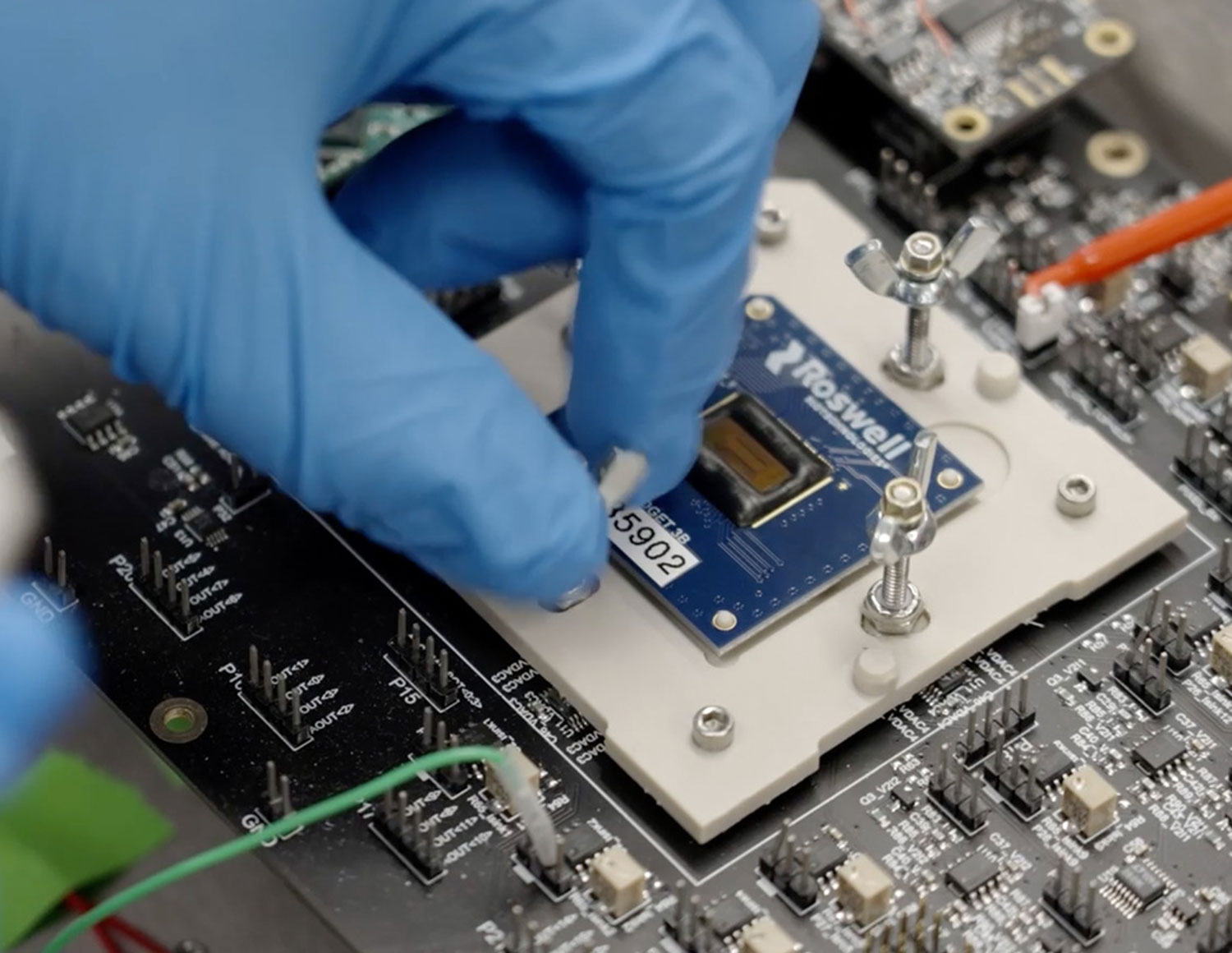Client story
Axsis demonstrates the possibilities of intelligent robotic design. We challenged ourselves to create a surgical robot that was dramatically smaller yet significantly more capable than existing systems.
Axsis has the potential to transform a range of procedures, creating opportunities to use robots in completely new areas of surgery.
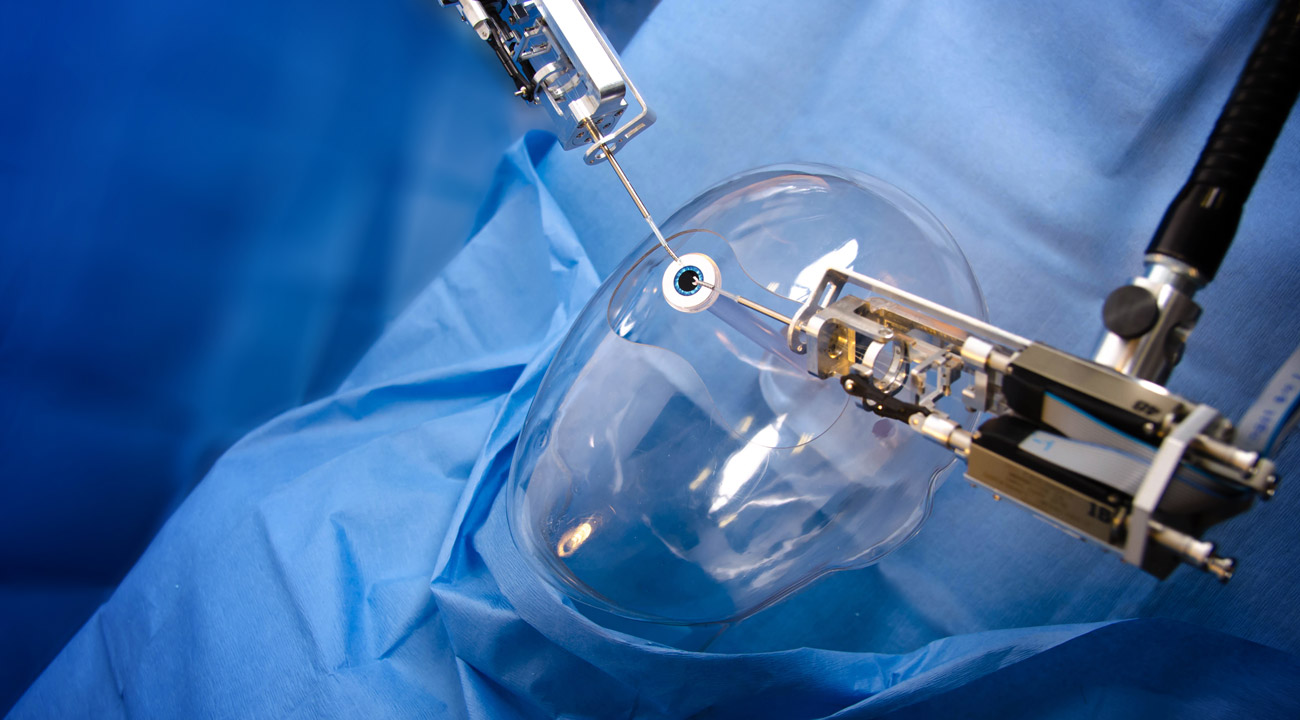
Miniaturisation
Flexible instruments and a novel motor / control configuration result in an external body no bigger than a drinks can.
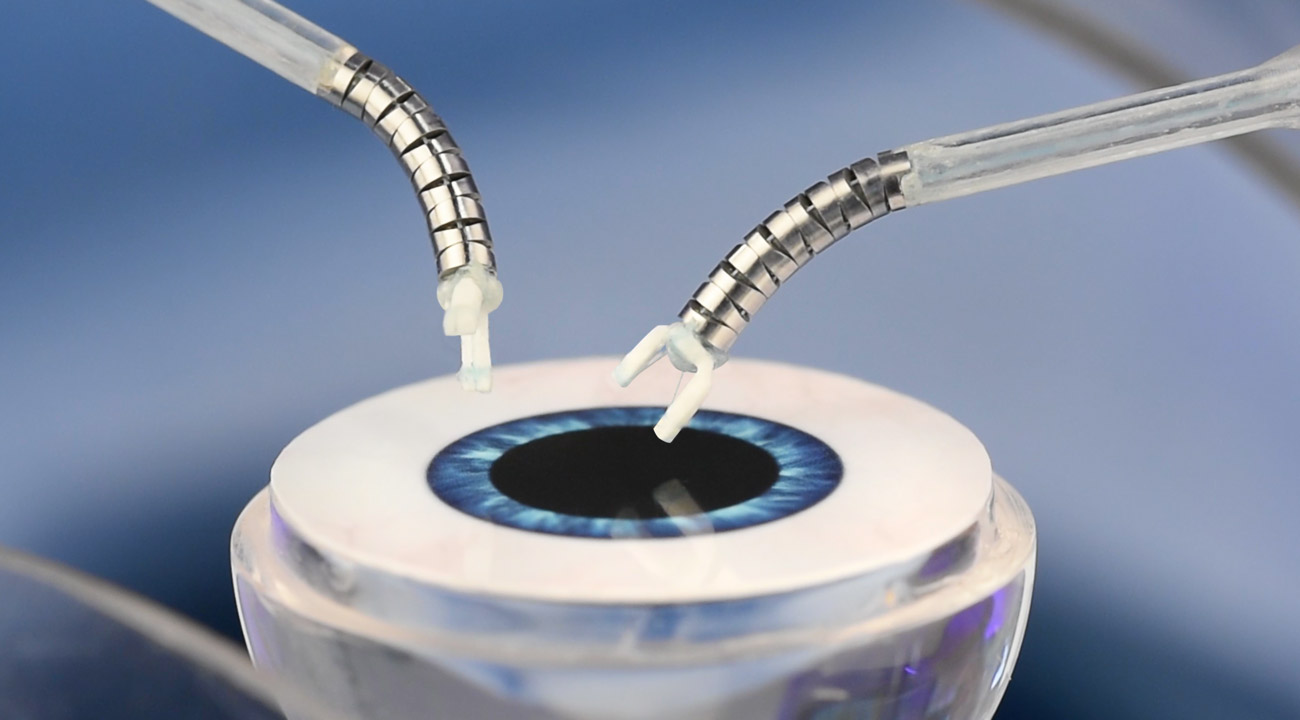
In-body articulation
Driving a 1.8mm arm with a 1mm working channel, Axsis combines four-degrees-of-freedom motion with the ability to apply multi-directional forces – axial, tangential and grasping – without any external motion.
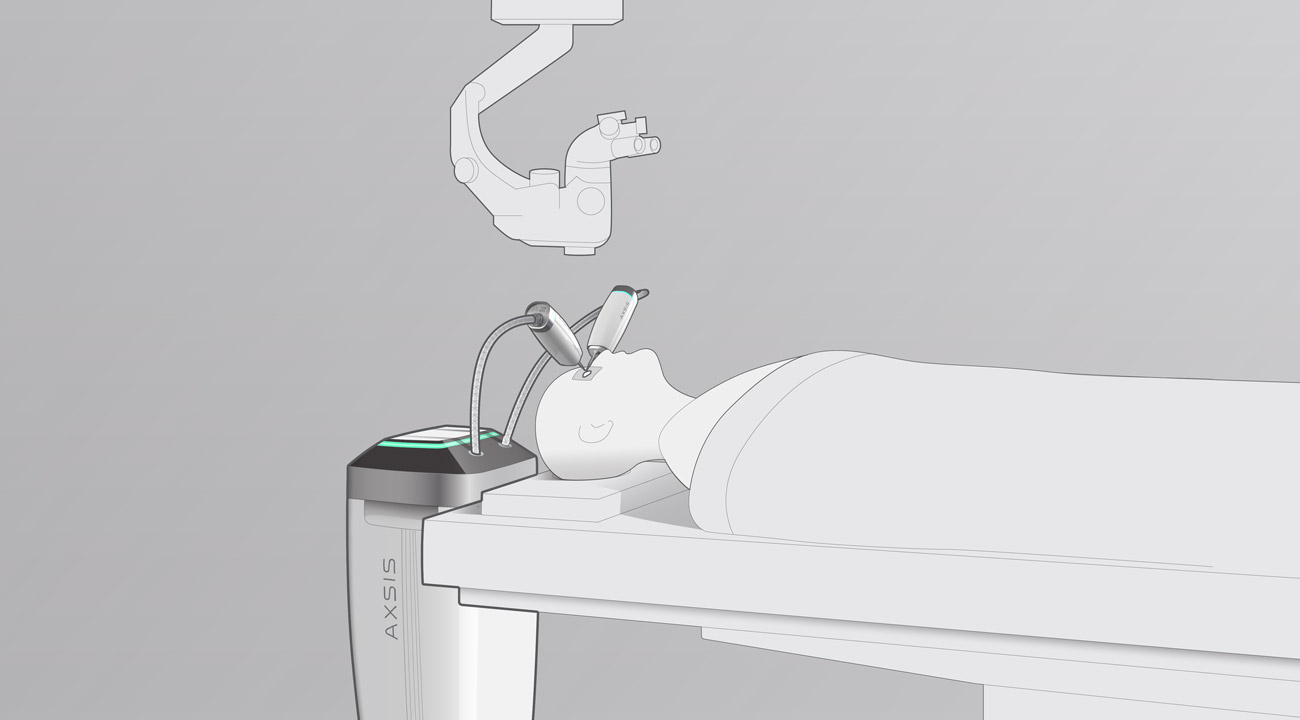
Operating space efficiency
Designed to work within the constraints of real-world operating rooms, Axsis can easily be deployed for part of a procedure and quickly removed for unhindered access to the patient.
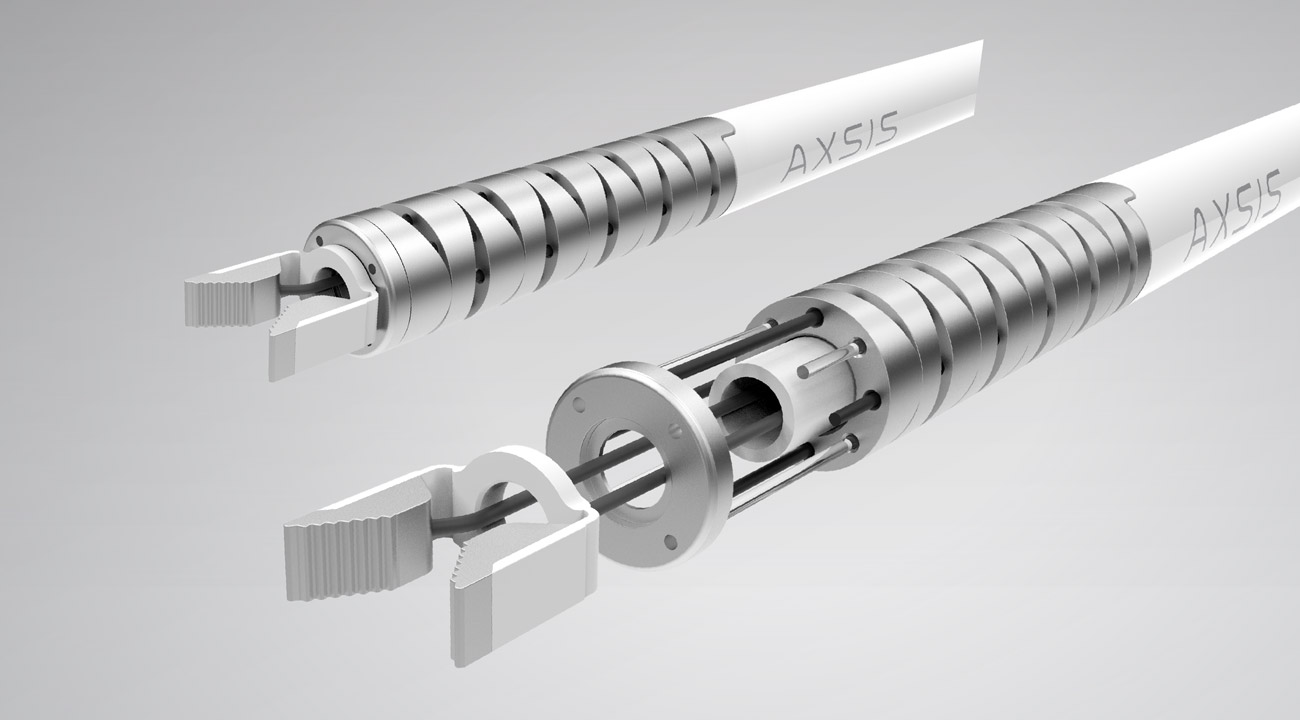
Responsiveness
The flexure’s rolling curve profile ensures a smooth and efficient motion that mirrors the surgeon’s hand movements. Force-reflecting telemanipulation gives the surgeon tactile feedback and a true sense of touch.
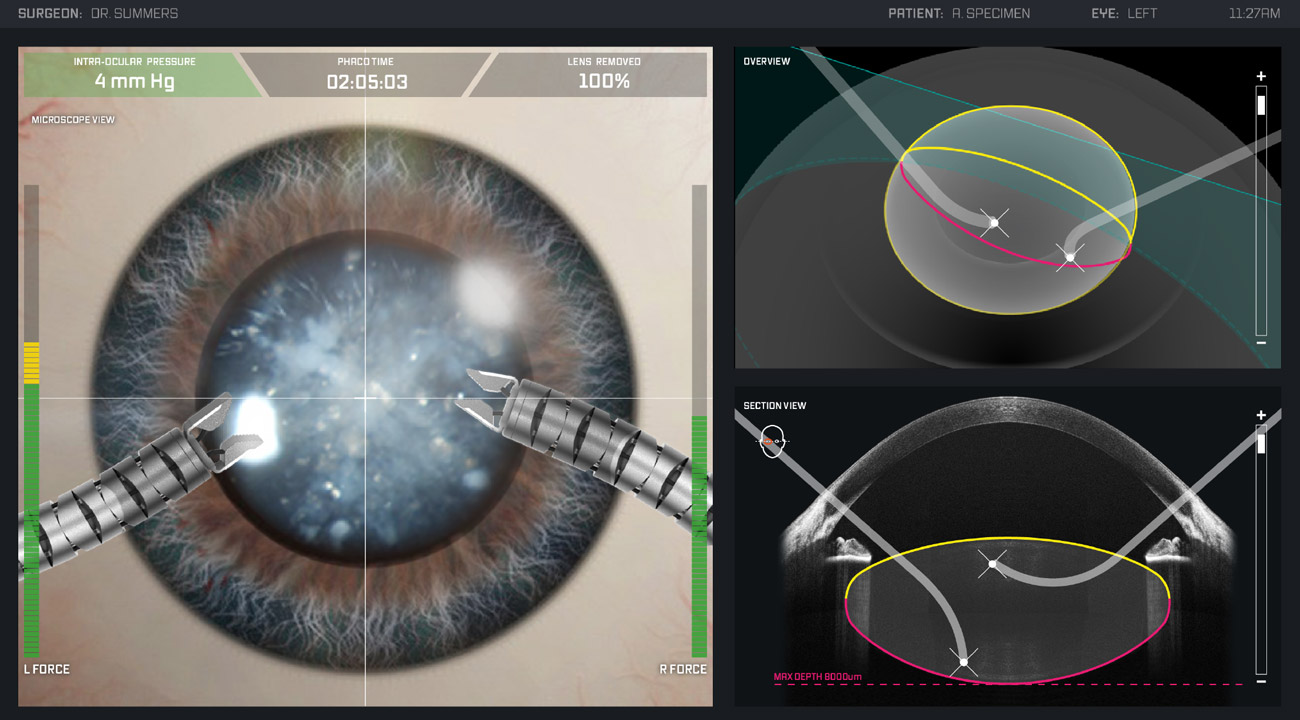
Image guidance
Axsis integrates with real-time 3D imaging, enabling a new level of robotic assistance. Virtual boundaries, surgical ‘macros’ and integration of artificial intelligence (AI) to inform and aid surgery all become possible.
“Axsis represents a massive jump forward in the development of cataract surgery, bringing the potential of simplifying and automating the most frequently performed surgical procedures in the western world. Posterior capsular (PC) tears are the most common serious complication in the 350,000 such procedures performed in the UK every year, the frequency of which is experience-dependant. An ‘experienced’ robot, such as Axsis, would reduce complication rates and improve outcomes for thousands of patients per year.”
Our involvement
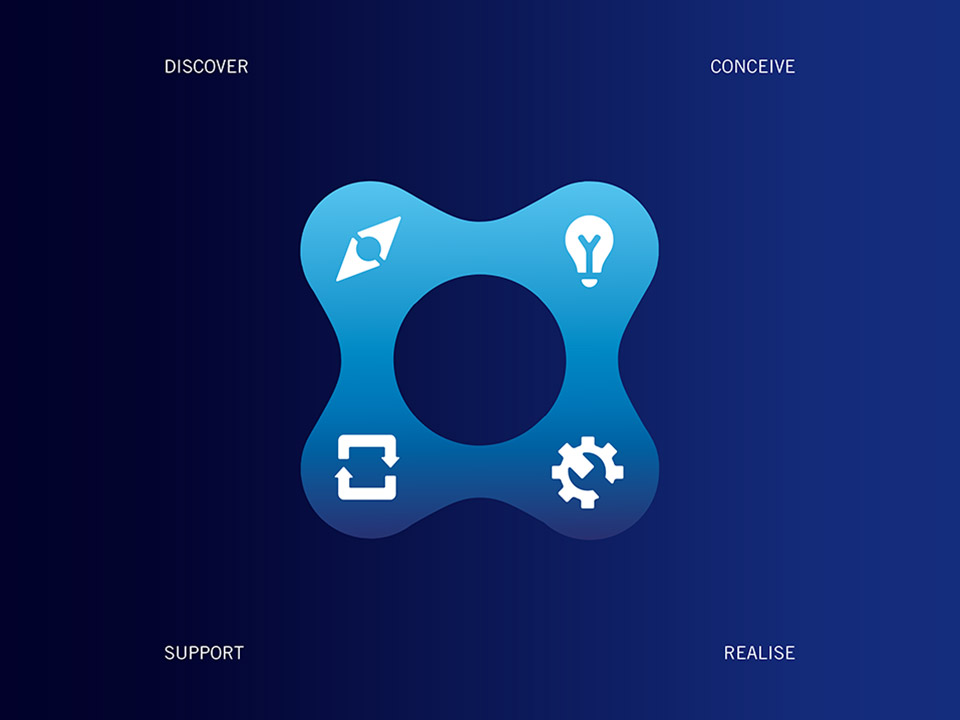
Our objective – to develop a lightweight, compact robot – is something that many others have tried before. However, by starting with a strong fundamental understanding of clinical practise and by making procedural priorities and clinical objectives our driver, we rapidly focused in on a design approach that varied from the norm.
Rather than try to shrink traditional robotic design approaches to work on a smaller scale, we took a different route – developing a core design that was small while delivering the right combination of functionality. Early proof-of-principle prototyping gave us confidence in our approach and allowed us to identify key technical challenges to be addressed early in development.
Once our core concept was established, we moved on to rapid development of the final system. Taking approximately five months from concept to demonstrator, our risk-based and systems engineering-led approach allowed our teams to run fast in parallel, with confidence that the system would integrate and work as expected, first time.
The challenge
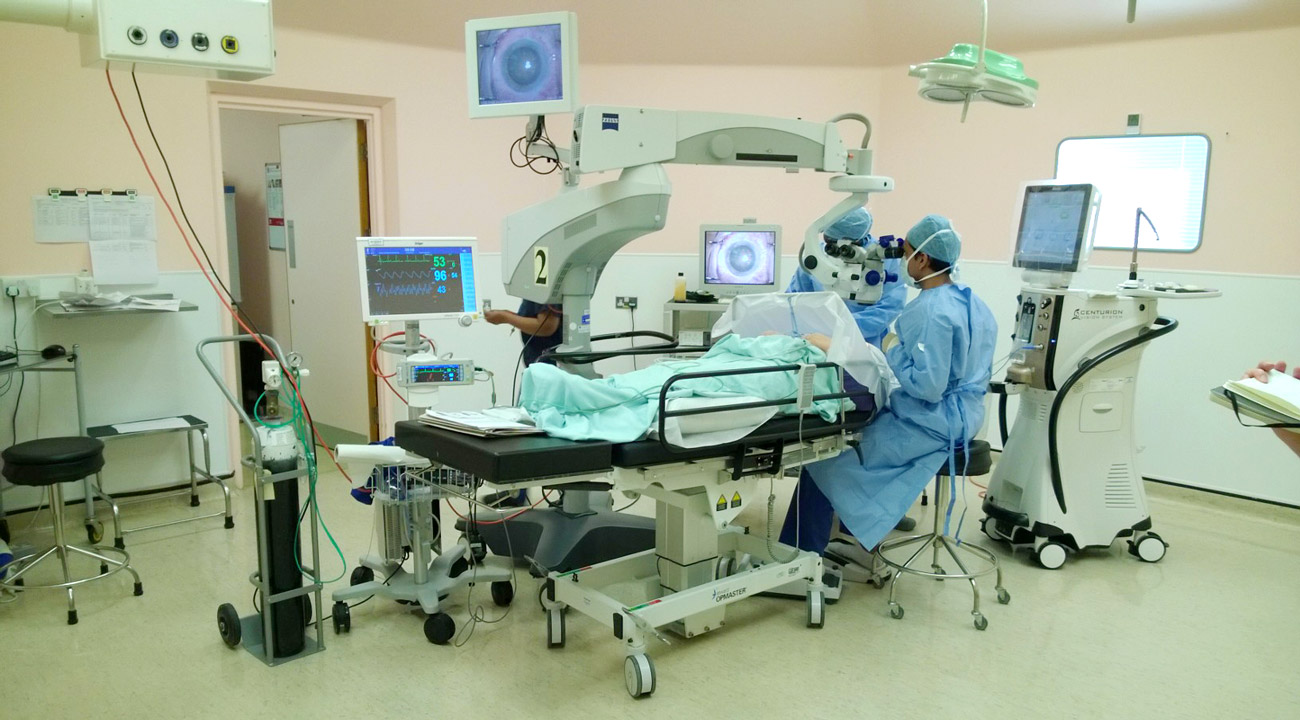
Seeing the potential
Cataract lens replacement is the highest volume surgical procedure in the world, with more than 300,000 operations carried out by the NHS in the UK every year. Outcomes are generally very good, but in some cases the patient is left with worse vision than before.
The surgery is currently performed by hand under a microscope. We realised that, if we could build a surgical robot on a miniature scale, the established benefits of robotics – such as motion scaling and minimally invasive access – could improve outcomes and allow more facilities to offer the procedure.
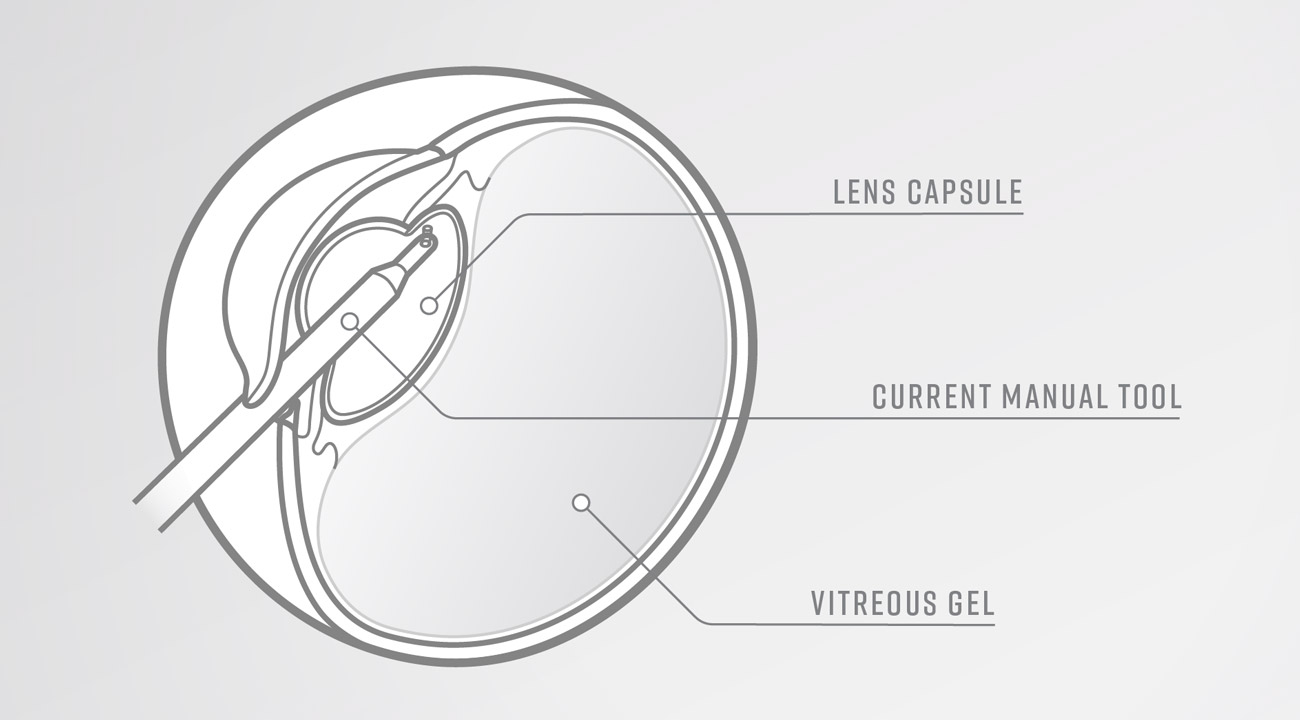
The scale of the problem
Our surgical robotics team worked with practising surgeons to understand the challenges of adopting current-generation robots for ophthalmology. Large by design, these robots feature long, straight instruments passing through small openings in the patient, driven by large, load-bearing motors. Consequently, these robots are simply not suitable for ophthalmological applications.
Our design uses small, static, non-load-bearing motors, rolling joints and a novel transmission system to minimise friction. The result is a fully articulating robot designed to operate on a completely different scale to traditional surgical robotics.

A big future
Having developed Axsis as a technical demonstration for ophthalmic surgery, we are now looking to the possibilities beyond.
Miniature, articulating surgical tools have the potential to deliver significant benefits in many other areas, such as early intervention procedures for cancer and natural orifice surgery for oesophageal and gastrointestinal tract procedures, as well as the placement of certain neurostimulation implants.


